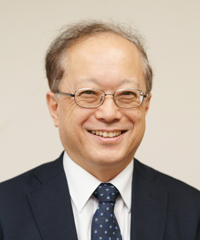I am sure that many are distressed by the heartbreaking cases of child abuse that are reported in the media almost every day. Cases reported to the Child Guidance Offices are increasing rapidly every year. Just a few years ago, they surpassed 50,000 per year, but then quickly reached 120,000 per year. The number of children who die due to abuse is not increasing as much as the cases of reported abuse, but even excluding parent-child murder-suicides, or "joint suicides," about 50 children die each year as a result of child abuse.
One TV program responded to this situation by featuring a discussion by specialists on the subject of child abuse, which I had the opportunity to watch. It is impossible to address all problems and topics related to child abuse in such a short time, and the discussion focused on reforming the system used in Child Guidance Offices for families where child abuse appeared likely and police intervention. In fact, the government has recently proposed legislation to prohibit physical punishment and has recommended organizational reform of Child Guidance Offices.
It is estimated that about 80 countries have passed legislation banning physical punishment, and while we should welcome the fact that Japan is one of these countries, I do so with some reservation. We know from experience in many countries that legislation prohibiting physical punishment alone does not instantly lead to a decline in physical punishment or abuse. Even in Sweden, the first country to pass legislation to ban the physical punishment of children, the prohibition alone was not sufficient to reduce the number of abuse cases. Rather, the ban became effective when the attitude of the Swedish people toward physical punishment and abuse changed. Panel discussions in the media emphasized more intervention in households where child abuse was taking place and focused on measures to be taken after abuse had occurred. There was almost no discussion of how to prevent child abuse. In households which carried out punishment that was considered to be abuse, the passage of legislation banning physical punishment also carried the danger that this punishment would now be secretly carried out.
Most infants and toddlers, an age group that is often abused, go to daycare centers or attend preschool. According to Professor Joseph Tobin, whom I have introduced in my blog, early childhood education in Japan is characterized by an attitude of mimamori (teaching by watching and waiting or non-intervention). In the course of childcare activities, childcare staff and teachers are in a position to notice symptoms and signs of abuse based on their view of the children and the child-parent relationship. Some organizations involved in childcare also state that one of their functions is early detection of child abuse. In reality, however, much of the actual response is left to individual childcare staff, and there is not enough effort at the organizational level to address the needs of a child who shows signs of having been abused. Given their very busy schedules and responsibilities, it is not easy for the staff to deal individually with a parent or guardian who is thought to have abused a child.
The other day, at a large meeting of a daycare association, when I expressed my view that childcare centers should strive to prevent child abuse, I was told that child abuse was already a topic among the childcare staff training and that it was crucial for each staff member to have an understanding of child abuse. It is, of course, important for each childcare worker to deepen his or her understanding, but what I wanted to say was that the daycare association should deal with and approach this problem at the organizational level. For example, if a childcare worker at one of the affiliated centers senses that a certain child might have been abused, rather than the individual or the childcare center handling the matter alone, I would expect a response at the organizational level, that is, a response coordinated by the department in charge at the association with the Child Guidance Office.
The daycare association offers programs to improve the quality of counseling offered by childcare staff and provide support in legal cases involving daycare centers. Now, it is the time to strengthen organizational efforts to prevent child abuse as one part of the overall childcare program. If we consider that daycare centers are entrusted with the protection of children, the recent sharp increase in abuse cases seems to suggest that their mission is not being fulfilled.



 Yoichi Sakakihara
Yoichi Sakakihara










